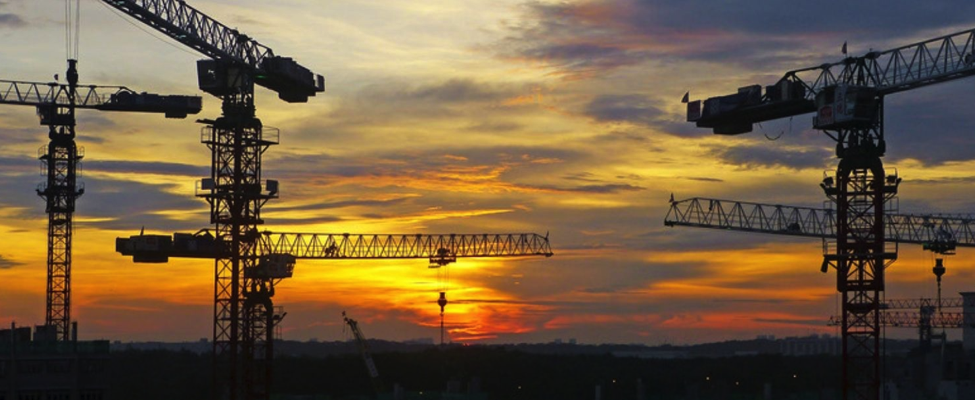We run through the top construction industry trends
The last couple of years have been anything but straightforward for the construction industry. With global lockdowns, supply chain disruption, economic turmoil, and an increasingly remote workforce, it’s been a challenging time for projects of all sizes.
Issues such as the increasing cost of materials and shortages of experienced and qualified workers are predicted to continue into the new year, and in addition there are some new trends emerging which may start to change the face of the industry over the next twelve months.

A move from commercial towards residential schemes
The changes in the global economy over the past few years have already begun a shift from commercial to residential schemes, and this trend is set to continue through the next few years. With the effects of the pandemic still being felt, and many companies choosing to keep staff at home at least some of the time, demand for office space is reducing, and some businesses are looking to downsize rather than invest in new premises.
The impact on the sector of this shift from commercial to residential is likely to be more than just a change in the type of project undertaken. The residential sector has historically been a barometer for the state of the economy, meaning that residential development rises and falls in line with the wealth of the nation. This introduces a little more uncertainty for construction firms that may be more used to large infrastructure projects planned years in advance.
Every construction project is very tightly controlled in terms of budget, but recent events are likely to bring even more pressure in terms of profit versus costs. This is in large part due to the rising cost of materials nationwide, meaning that profit margins are becoming slimmer. Timber, plastics, and steel in particular have seen large increases, and disruptions to the supply chain caused by the pandemic haven’t helped, with localized shortages leading to price rises.
Project managers need to articulate and acknowledge these risks to delivery and plan for them accordingly within each individual project.
The demand for qualified workers is set to remain high; however, the way that those workers operate within their jobs is likely to change. Skilled employees are becoming much more fluid with their patterns of employment, moving from project to project on a frequent basis and not staying with any one company for long. This is in contrast to more traditional patterns of work where someone might take a ‘job for life.’
The next twelve months will see important disciplines such as project controls being characterized by this new ‘in and out’ approach, with employees joining a project to contribute their expertise on a short-term basis, before moving on to a different role.

The integration of technology into construction
‘Smart cities’ were once a theoretical concept that is now being made a reality. Data is used to design liveable, healthy cities with a low environmental impact and then to operate those cities in the most efficient and sustainable way possible once populated.
More and more frequently, therefore, construction projects will need to consider this ‘smart’ element when moving through the project planning and scheduling process. Construction companies need to take account of technology when designing and constructing ‘smart’ sites, and expertise will be needed to ensure that emerging technology is properly integrated into the fabric of the built world.
Sustainability as a core concept
Sustainability has been a buzzword for a while now, will see the construction industry move forward with a number of innovative initiatives which will help reduce costs and lower environmental impact.
3D printing, engineered timber, polymer-derived concrete, and an improvement in the quality of recycled materials are all examples that can help reduce the carbon footprint of construction projects, as well as possibly lowering costs. More and more frequently, the ecological impact of construction is being called into question, and sustainability will be a core angle to be considered in order for contracts to be awarded.
The future is challenging but full of potential
While there are many challenges for the construction industry to work through, there is also huge potential for innovation and positive change in the industry. New materials, a more dynamic workforce, a welcome focus on sustainability, and the exciting possibilities offered by new technology are all key trends for the coming twelve months.
At DRMcNatty, we pride ourselves on our knowledge of the construction industry and our expertise in all aspects of project management. If you would like a conversation about how we can help you navigate the new challenges and opportunities, then get in touch with our friendly team today.






